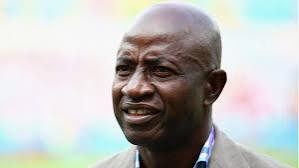In the lead-up to the next Olympic Games, many are reflecting on missed opportunities in Nigerian sports development. One such opportunity was the Nigeria Academicals Sports Committee (NASCOM), an initiative aimed at reviving grassroots sports in secondary schools, ultimately serving as a feeder to elite sports at higher levels. This ambitious program, approved by former President Dr. Ebele Goodluck Jonathan and chaired by former sportsman Segun Odegbami, held the promise of revolutionizing sports development in Nigeria. However, it was abruptly halted by a new Minister of Youth and Sports.

NASCOM’s mission was straightforward yet profound: to rejuvenate sports participation in every Nigerian secondary school. The vision went beyond a simple national football competition; it sought to catalyze a comprehensive grassroots sports development program with far-reaching impacts. This included boosting youth engagement, encouraging school enrollment, documenting athletes, and creating a seamless transition from secondary to tertiary levels in sports.
Odegbami, leveraging his extensive background in school sports and sports administration, saw NASCOM as an opportunity to create a structured, well-funded, and sustainable sports development program. His strategy involved consulting a wide range of stakeholders, including federal and state sports and education ministries, local government sports councils, and various sports federations. The goal was to build a collaborative network that would support the program’s implementation and longevity.
One of NASCOM’s innovative ideas was to document all student athletes across Nigeria. This documentation would include comprehensive personal and sports-related information, accessible to institutions nationwide. Additionally, student athletes would receive multifunctional cards provided by a partnering bank, serving as national student ID cards, insurance cards, and basic ATM cards. This initiative aimed to streamline athlete management and support, ensuring continuous welfare and career development.
Funding for the program was to come from various sources, including marketing, sponsorships, partnerships, and student sports levies. Odegbami’s plan gained significant traction, with institutions and a major bank showing enthusiastic support. The bank even began developing IT solutions for the program and demonstrated its commitment by providing resources to NASCOM.
However, the program’s momentum came to a sudden halt in 2012, when a new Minister of Youth and Sports was appointed. This new minister, upon returning from the London Olympics, decided to implement his own initiatives. One of his first actions was to dismantle NASCOM, changing its leadership and effectively terminating the project. This decision marked the end of what could have been Nigeria’s most ambitious grassroots sports development program.
The abrupt cancellation of NASCOM serves as a poignant reminder of how political changes can impact long-term development projects. Odegbami’s vision for a robust and sustainable grassroots sports infrastructure remains unrealized, a casualty of administrative shifts and changing priorities. As Nigeria prepares for another Olympic Games, the loss of NASCOM underscores the need for stable, visionary leadership in sports administration to ensure that such promising initiatives can reach their full potential.



